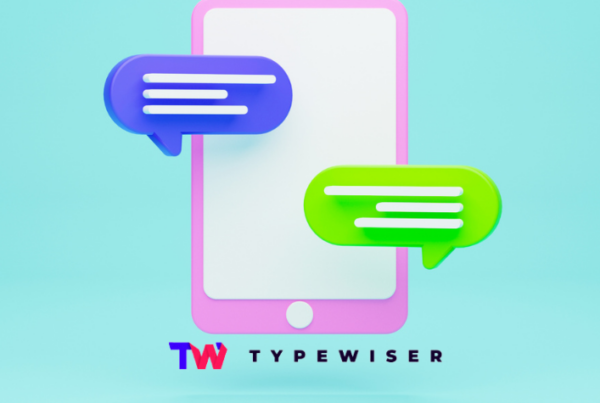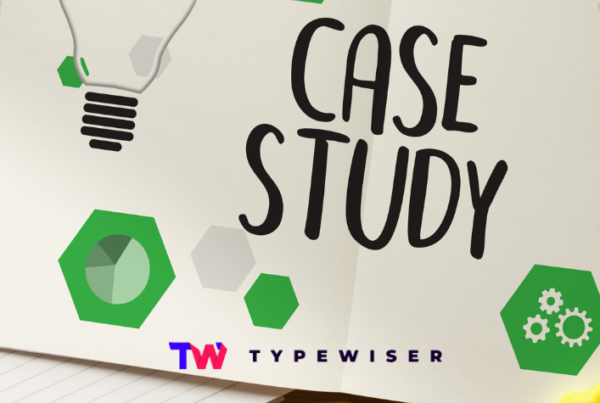For decades, barriers like paywalled journals, language gaps, and isolated data have kept much of science out of reach for many.
 However, more recently, a powerful combination of AI and open science is breaking down these walls. Open science champions the idea that knowledge should be freely shared and inclusive, making scientific research “accessible to everyone” and the process of knowledge creation “inclusive, equitable and sustainable”.
However, more recently, a powerful combination of AI and open science is breaking down these walls. Open science champions the idea that knowledge should be freely shared and inclusive, making scientific research “accessible to everyone” and the process of knowledge creation “inclusive, equitable and sustainable”.
In this blog post, we’ll explore how AI and open science together are opening up research to the world.
Global Collaboration Through AI and Open Science
One of the core ideas of open science is that sharing and collaboration make research better.
Instead of guarding data or working in isolation, scientists around the world are increasingly pooling their knowledge to tackle big challenges.
Open science “increases scientific collaborations and sharing of information for the benefit of science and society”. An important aspect of this openness is transparency – making methods, data, and results visible so that others can learn from them, verify them, or build on them.
A great example of global collaboration in action is the CERN Open Data Portal. CERN, home of the Large Hadron Collider in Switzerland, generates enormous amounts of particle physics data. In the past, such data might only be analyzed by an elite team on site. But CERN’s open data platform now makes these datasets freely available to researchers anywhere with an internet connection.
In fact, the CERN Open Data portal explicitly aims to share data with “researchers outside the CERN experimental teams, as well as citizen scientists,” and provides curated resources for education and training.
This means a physics student in Brazil or a data enthusiast in Kenya can download actual LHC experiment data and try their hand at analysis. Already, there have been scientific papers published based on this openly shared data.
Open data platforms like this foster global collaboration – someone who could never build a particle collider can still participate in particle physics research, bringing diverse perspectives and talents into the fold.
Citizen science projects exemplify this by inviting people from all walks of life to contribute to real research. Consider Zooniverse, the world’s largest platform for citizen science. Founded in 2007, Zooniverse has connected research teams with more than 2.7 million volunteer “citizen scientists” around the globe.
Through Zooniverse, volunteers help classify galaxies, count penguins in images from the Antarctic, transcribe historical documents, and more – tasks that are “too tricky for computers to parse and too big for any research team to tackle on its own”.
By encouraging collaboration across borders and even outside academia, open science is creating a richer, more diverse research ecosystem. A global team can attack problems from multiple angles and consider a wider range of needs.
For example, sharing data on diseases or climate change openly allows researchers in countries most affected by these issues to contribute insights and solutions, rather than waiting for information to trickle out.
This kind of inclusive collaboration was crucial during the COVID-19 pandemic, when scientists worldwide shared genomic data and research findings freely in real-time, and used tools (often AI-driven) to analyze a flood of papers. It’s a powerful reminder that knowledge grows faster and stronger when everyone shares what they know.
AI Breaking Barriers: From Language to Information Overload — 2025 update
 Opening up all this science is wonderful — but it also creates a new challenge: information overload. With millions of research papers and huge datasets now accessible, how can any one person find the knowledge they need or make sense of it all?
Opening up all this science is wonderful — but it also creates a new challenge: information overload. With millions of research papers and huge datasets now accessible, how can any one person find the knowledge they need or make sense of it all?
This is where AI steps in as a crucial partner to open science. State-of-the-art language models are becoming the research assistants we desperately need, helping us search, translate and summarise scientific information at super-human scale and speed.
GPT-class models are rewriting the rules of scientific translation
Until recently, neural machine translation (NMT) tools such as Google Translate and DeepL dominated the field, but the latest generation of GPT models has up-ended the landscape.
- Real-time, multimodal translation. Among the demo use-cases showcased at launch was live voice-to-voice translation between multiple languages, powered by the new low-latency Realtime API.
- Quality that rivals (and sometimes beats) legacy MT systems.
- A March 2025 evaluation across three Indian low-resource languages (Sanskrit, Telugu and Hindi) found GPT-4o consistently outperformed Google Translate on semantic-similarity and sentiment-preservation metrics, delivering translations closer to expert human versions.
- A March 2025 evaluation across three Indian low-resource languages (Sanskrit, Telugu and Hindi) found GPT-4o consistently outperformed Google Translate on semantic-similarity and sentiment-preservation metrics, delivering translations closer to expert human versions.
- Translation as part of the research workflow. Because GPT models are multimodal, a scientist can now drop a PDF, a slide deck or even a lab-notebook photo into ChatGPT and receive an instant draft translation, glossary look-ups and a plain-language summary. Journals and pre-print servers have begun to experiment with GPT-powered pipelines that publish parallel translations alongside the original manuscript, broadening readership without adding delay or staff overhead.
- What still needs work. Despite these leaps, GPT systems are not flawless. Peer-review studies highlight that figurative language, domain-specific jargon and very low-resource language pairs remain stumbling blocks, and models occasionally slip into code-switching or overly literal phrasings. Ethical guidelines therefore urge authors to double-check AI translations for accuracy and cultural sensitivity, and to disclose AI assistance in manuscripts.
Beyond language: taming the fire-hose of open data
Translation is only half the battle; once papers are readable, researchers must still find and digest the right knowledge. AI tools purpose-built for science address this “needle-in-a-haystack” problem:
- Semantic Scholar now offers GPT-based one-sentence abstracts and citation-graphs for more than 200 million papers, letting users scan a topic in minutes.
- Elicit automates literature searches and evidence tables, extracting sample sizes, outcomes and confidence intervals with a single query.
In short, the latest GPT models have shifted machine translation from “good enough for a gist” to “good enough to cite.” As real-time, multimodal translators become commonplace, the language barrier that once siloed scientific knowledge is fading fast, bringing the vision of truly borderless, open science within reach.
The Role of Policy and Ethics in AI and Open Science
 Technology and community efforts are driving a revolution in how science is done, but lasting change also requires the right policies and ethical guidelines.
Technology and community efforts are driving a revolution in how science is done, but lasting change also requires the right policies and ethical guidelines.
Open science thrives when institutions and governments actively support it through policy.
For instance, many funding agencies and journals now mandate open access publishing – meaning that scientific papers must be made freely available to the public, not locked behind subscription fees.
Major research funders in Europe launched Plan S, an initiative requiring that any research they fund be published in open access journals or platforms. Similarly, in the United States, the White House’s science office issued guidance that federally funded research papers should be made openly available without delay. These policies remove legal and financial barriers, ensuring that a student or scientist anywhere in the world can read the latest findings without restriction.
Open data policies are also emerging, requiring that data from research (especially publicly funded research) be shared in repositories like Zenodo or Dryad for others to reuse. By building openness into the rules of research, policy can cement the gains of open science and make them the new normal.
Ethics is the other side of the coin – it’s about doing openness right. As we use AI and open up science, we must be mindful of issues like privacy, consent, and fairness. For example, medical research data needs to be shared in ways that protect patient identities. Traditional knowledge from indigenous communities should not be openly shared without permission, to avoid exploitation. AI tools need to be used responsibly, with awareness of potential biases in algorithms.
There is active discussion in the scientific community about responsible AI in research – for instance, ensuring that AI models used to analyze data are transparent (so their results can be understood and verified) and that they don’t inadvertently disadvantage researchers from regions with less data.
The UNESCO Recommendation on Open Science (adopted in 2021) underscores the importance of a “fair and equitable open science for all”, calling on countries to create enabling environments and infrastructure for open science while addressing technological and knowledge divides. It emphasizes that open science should reduce gaps between and within countries, not widen them – a principle that guides ethical sharing of knowledge and tools.
International frameworks like the UNESCO recommendation also highlight values such as inclusivity and accountability in science. By making openness a matter of principle, they ensure that as we embrace openness, we also respect diversity and equity. This includes promoting multilingual science (so that English isn’t a gatekeeper – tying back to AI translation efforts) and involving a broad range of stakeholders in science (from big universities to community labs).
It also involves training and capacity-building: not every researcher has the same resources to adopt open practices or AI tools, so initiatives that teach data science or provide computational resources to under-resourced groups are vital. Ethical open science means providing everyone the opportunity to participate and benefit, thereby truly making research a global public good.
A More Open and Intelligent Future
AI and open science are reshaping research into a more inclusive, accessible, and collaborative effort. From labs in Tokyo to classrooms in Manila, knowledge is being shared globally, enabling anyone with curiosity and the right tools to contribute. AI is helping break down barriers—linguistic, geographic, and disciplinary—bringing science closer to communities everywhere.
Challenges remain, from paywalled research to uneven digital access, and the ethical use of AI must stay a priority. But the shift toward openness is clear. With growing global collaboration, better tools, and a new generation demanding transparency, the vision of borderless, democratic science is fast becoming reality.



